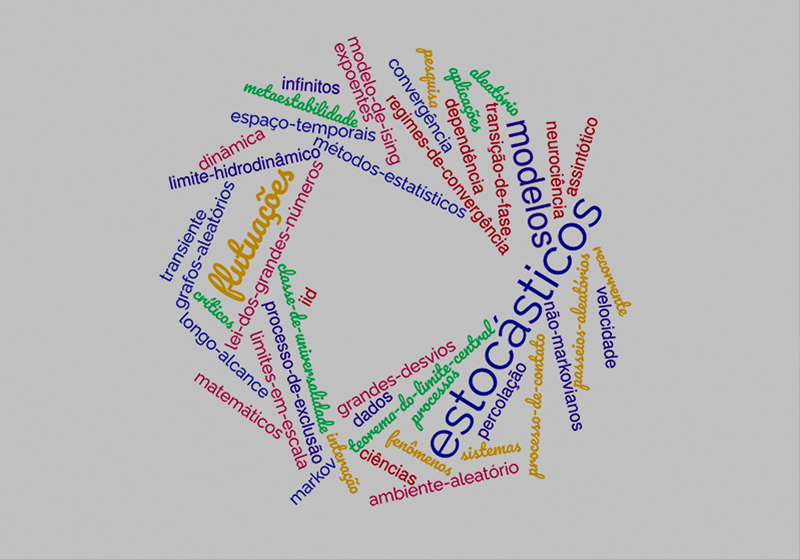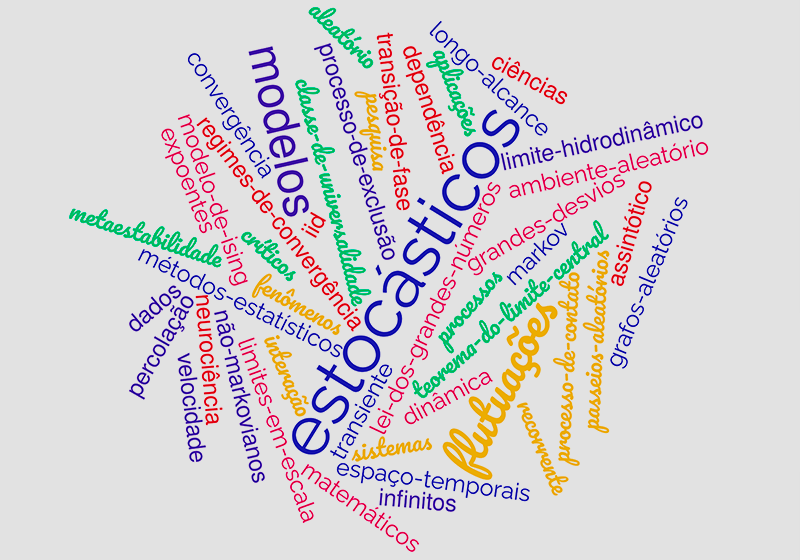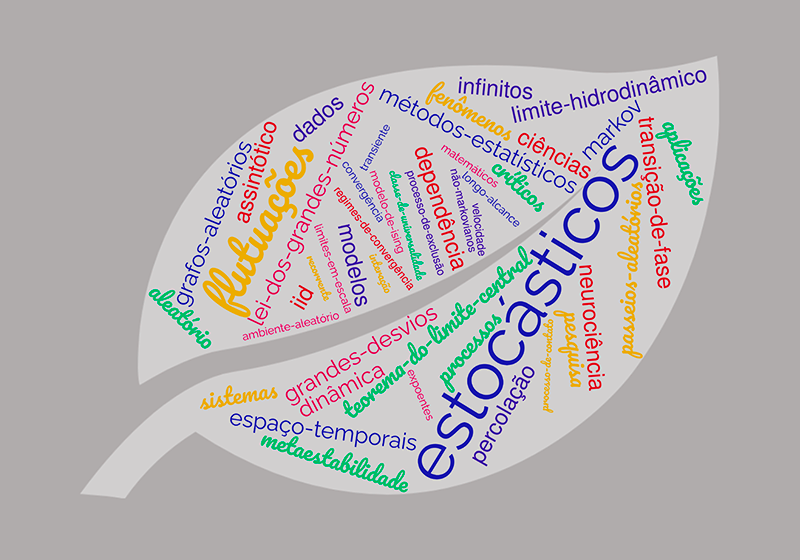 Probability Seminar ''Causal Inference Under Mis-Specification: Adjustment Based on the Propensity Score''
Probability Seminar ''Causal Inference Under Mis-Specification: Adjustment Based on the Propensity Score''
December 11, from 3:30 p.m. to 4:30 p.m. (Rio de Janeiro local time)
Local: room C116 - Bloco C - CT – Instituto de Matemática – UFRJ
Speaker: Widemberg da Silva Nobre (IM-UFRJ)
Abstract: We study Bayesian approaches to causal inference via propensity score regression. Much of Bayesian methodology relies on parametric and distributional assumptions, with presumed correct specification, whereas the extant propensity score methods in Bayesian literature have relied on approaches that cannot be viewed as fully Bayesian in the context of conventional ‘likelihood times prior’ posterior inference. We emphasize that causal inference is typically carried out in settings of mis-specification, and develop strategies for fully Bayesian inference that reflect this. We focus on methods based on decision-theoretic arguments, and show how inference based on loss-minimization can give valid and fully Bayesian inference. We propose a computational approach to inference based on the Bayesian bootstrap which has good Bayesian and frequentist properties.
Link of the paper HERE.
More complete information about the seminars can be found at DME.
Sincerely,
Organizers: Giulio Iacobelli e Maria Eulalia Vares
 Probability Seminar ''On a Dyson-fractional Brownian motion'' November 27, from 3:30 p.m. to 4:30 p.m. (Rio de Janeiro local time)
Probability Seminar ''On a Dyson-fractional Brownian motion'' November 27, from 3:30 p.m. to 4:30 p.m. (Rio de Janeiro local time)
Local: Transmissão Online
Clique AQUI para acessar a transmissão.
Speaker: Victor Pérez-Abreu (Guanajuato, Mexico)
Abstract: This talk will present an overview of the behavior of the eigenvalues of the fractional Brownian matrix motion and other related matrix processes. We emphasize on a possible extension of the Dyson-Brownian motion, namely the dynamics of the eigenvalues processes and their non-colliding property, the limit of the associated empirical process, as well as the free Brownian motion and the non commutative fractional Brownian motion.
More complete information about the seminars can be found at DME.
Sincerely,
Organizers: Giulio Iacobelli e Maria Eulalia Vares
 Title: "Properties of the gradient squared of the Gaussian free field"
Title: "Properties of the gradient squared of the Gaussian free field"
Speaker: Sergio I. López (Universidad Nacional Autónoma de México)
Date: 30/10/2023
Time: 3:30 p.m. to 4:30 p.m. (Rio de Janeiro local time)
Local: Online
This meeting will take place on Google Meet, through the link HERE.
Abstract: In this talk we study the scaling limit of a random field which is a non-linear transformation of the gradient Gaussian free field. More precisely, our object of interest is the recentered square of the norm of the gradient Gaussian free field at every point of the square lattice. Surprisingly, in dimension 2 this field bears a very close connection to the height-one field of the Abelian sandpile model studied in Dürre (2009). In fact, with different methods we are able to obtain the same scaling limits of the height-one field: on the one hand, we show that the limiting cumulants are identical (up to a sign change) with the same conformally covariant property, and on the other that the same central limit theorem holds when we view the interface as a random distribution. We generalize these results to higher dimensions as well.
Joint work with Rajat Subhra Hazra (Leiden), Alan Rapoport (Utrecht) and Wioletta Ruszel (Utrecht)
More complete information about the seminars can be found at HERE
Sincerely,
Organizers: Giulio Iacobelli e Maria Eulalia Vares
 Probability Seminar "Stein’s method and asymptotic independence" November 6, from 3:30 p.m. to 4:30 p.m. (Rio de Janeiro local time)
Probability Seminar "Stein’s method and asymptotic independence" November 6, from 3:30 p.m. to 4:30 p.m. (Rio de Janeiro local time)
Local: Google Meet
Speaker: Ciprian Tudor (Université de Lille)
Abstract: If Y is a random vector in R^d we denote by P_Y its probability distribution. Consider a random variable X and a d-dimensional random vector Y. We develop a multidimensional variant of the Stein-Malliavin calculus which allows to measure the Wasserstein distance between the law P_(X, Y) and the probability distribution P_Z x P_Y, where Z is a Gaussian random variable. That is, we give estimates, in terms of the Malliavin operators, for the distance between the law of the random vector (X, Y) and the law of the vector (Z,Y), where Z is Gaussian and independent of Y.
Then we focus on the particular case of random vectors in Wiener chaos and we give an asymptotic version of this result. In this situation, this variant of the Stein-Malliavin calculus has strong and unexpected consequences.
More complete information about the seminars can be found at DME.
 Title: Targeted cutting of random recursive trees.
Title: Targeted cutting of random recursive trees.
Speaker: Sergio I. López (Universidad Nacional Autónoma de México)
Date: 16/10/2023
Horário: 3:30 p.m. to 4:30 p.m. (Rio de Janeiro local time)
Local: C116 - Bloco C - CT – Instituto de Matemática – UFRJ. There will be no transmission online.
Abstract: Increasing trees are rooted trees, where each vertex has a unique label and the labels along paths away from the root are in increasing order. A Random recursive tree on ? vertices (abbreviated as RRTs) is a tree chosen uniformly at random from the set of increasing trees with vertex labels {1,…,?}. The idea of cutting random recursive trees was introduced by Meir and Moon in 1974. They studied the following procedure: Start with a random recursive tree on ? vertices. Choose an edge at random and remove it, along with the cut subtree that does not contain the root. Repeat until the remaining tree consists only of the root; at which point, we say that the tree has been deleted.
Let X be the number of edge removals needed to delete a RRT with ? vertices. The random variable X has been thoroughly studied and analogous variables under distinct models of random trees have been analyzed; in particular, X grows asymptotically as ? ln(?). In this talk we propose and study a method for cutting down a random recursive tree that focuses on its largest degree vertices. Enumerate the vertices of a random recursive tree of size ? according to a decreasing order of their degrees. The targeted, vertex-cutting process is performed by sequentially removing vertices according to that order and keeping only the subtree containing the root after each removal. The algorithm ends when the root is picked to be removed.
Joint work with Laura Eslava and Marco L. Ortiz.
More complete information about the seminars can be found at HERE
Sincerely,
Organizers: Giulio Iacobelli e Maria Eulalia Vares
